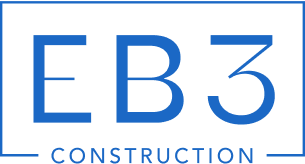Construction projects succeed when the right work, crews, and materials arrive precisely when needed. This level of coordination requires two interconnected disciplines working in harmony.
Construction project scheduling and logistics form the backbone of project execution. Scheduling creates the framework for when activities occur, while logistics ensures the physical flow of resources supports that timeline at every phase.
How Do You Build A Reliable Construction Schedule?

Building a reliable construction schedule requires a systematic approach that combines thorough planning with practical execution methods. We start by establishing clear project boundaries and breaking down complex work into manageable components.
Define Scope And Create The Work Breakdown Structure
Every reliable schedule begins with a comprehensive Work Breakdown Structure that captures 100% of the project scope. We identify all activities needed to complete construction, from site preparation through final inspections. Each work package becomes specific enough to assign resources and estimate durations accurately.
The WBS follows a hierarchical structure where major phases like foundations, structural work, and finishes break down into detailed tasks. We ensure each element is mutually exclusive to prevent overlap or confusion during execution. This systematic breakdown becomes the foundation for all subsequent scheduling activities.
Sequence Tasks Through Logical Dependencies
Once activities are defined, we establish the logical flow between tasks using dependency relationships. Finish-to-start dependencies dominate construction work, where concrete must cure before formwork removal or structural steel must be erected before mechanical rough-in begins.
We also account for lead and lag times that reflect real construction conditions. Lead time allows activities to overlap when possible, while lag time provides necessary delays for curing, drying, or regulatory approval processes. These timing adjustments create more realistic schedules that reflect actual field conditions.
Estimate Durations Using Historical Data And Trade Input
Accurate duration estimates combine historical project data with input from experienced trades and subcontractors. We gather three-point estimates for uncertain activities: optimistic, pessimistic, and most likely scenarios. This approach helps account for variability in construction work while maintaining realistic expectations.
Weather patterns, seasonal conditions, and local labor productivity rates influence our duration estimates. We also factor in non-working days, holidays, and planned shutdowns that affect the actual working time available for each activity.
Build In Buffers And Quality Checkpoints
Reliable schedules include strategic buffers to absorb unexpected delays without derailing the entire project. We place buffers before critical milestones and after high-risk activities where delays commonly occur. These time reserves help maintain schedule integrity when unforeseen issues arise.
Inspection scheduling and quality checkpoints are integrated throughout the schedule to prevent bottlenecks. We coordinate with local authorities early to understand permit and inspection requirements, then build adequate time for these processes. This proactive approach prevents delays caused by regulatory compliance issues.
Allocate Resources Against Availability And Constraints
Resource allocation matches labor, equipment, and materials to activities while respecting availability constraints. We identify resource conflicts early and apply resource leveling techniques to smooth demand peaks and valleys. This prevents overallocation that leads to delays and cost overruns.
Equipment scheduling requires careful coordination, especially for specialized items with limited availability. We sequence activities to maximize equipment utilization while minimizing idle time and rental costs throughout the project duration.
Apply Visual Tools And Proven Methods
Gantt charts provide clear visual representation of the schedule timeline, showing task durations, dependencies, and float relationships. Network diagrams help validate logic and identify the critical path that drives project completion. Both tools support effective communication with project stakeholders.
We select scheduling methods based on project characteristics. The Critical Path Method works well for complex projects with many interdependencies. Line of Balance suits repetitive work like multi-story buildings or linear infrastructure. The Last Planner System enhances collaboration and improves workflow reliability through commitment-based planning.
Establish Baseline And Monitor Progress
The approved schedule becomes our baseline for measuring progress throughout construction. We document all assumptions, constraints, and logic decisions to maintain schedule integrity. This baseline serves as the reference point for tracking actual performance against planned work.
Regular progress monitoring compares plan versus actual completion using weekly updates and look-ahead planning. We adjust the schedule proactively when conditions change, maintaining realistic forecasts that support informed decision-making. This ongoing process ensures the schedule remains a useful management tool rather than an outdated document.
What Makes A Strong Construction Logistics Plan?
We build strong construction logistics plans around material flow optimization and strategic timing. A comprehensive plan balances immediate needs with long-term project requirements while maintaining safety and regulatory compliance.
Material And Transportation Coordination
Route planning forms the backbone of efficient material delivery. We establish primary and alternate routes for deliveries, considering vehicle size restrictions, turning radius requirements, and local traffic patterns. Safe delivery windows help avoid peak traffic hours and minimize site congestion during critical work phases.
Site traffic rules create order on active construction sites. We designate specific entry and exit points for delivery vehicles, establish one-way traffic flows where possible, and coordinate with local authorities when street closures or lane restrictions are necessary. Clear signage and communication protocols ensure all drivers understand site-specific requirements.
Supply And Demand Balance
Preventing material shortages requires accurate forecasting tied to project phases. We track consumption rates for key materials and establish reorder points that account for supplier lead times. This approach prevents work stoppages while avoiding excess inventory that ties up capital and storage space.
Just-in-time deliveries work particularly well for materials susceptible to weather damage or theft. We coordinate these deliveries closely with work crews to ensure materials arrive when needed and move directly to their point of use. This strategy reduces handling costs and minimizes on-site storage requirements.
Site Assessment And Infrastructure Planning
Thorough site condition assessments identify potential delivery challenges before they impact schedules. We evaluate road conditions, turning spaces, overhead clearances, and ground stability for heavy equipment access. Comprehensive site logistics planning addresses these factors systematically to prevent delivery delays.
Access point planning considers both current site conditions and how they evolve throughout construction phases. We maintain flexibility by identifying multiple delivery routes and establishing temporary access roads when permanent infrastructure is unavailable. Regular reassessment ensures access plans remain viable as construction progresses.
Storage And Inventory Management
Designated storage areas protect materials from damage while maintaining site organization. We establish secure zones for high-value items, weather-protected areas for sensitive materials, and easily accessible locations for frequently used supplies. Proper storage planning reduces material waste and improves crew productivity.
Inventory tracking systems provide real-time visibility into material quantities and locations. We implement simple tracking methods that crews can use efficiently without disrupting workflow. Digital tools help manage inventory across multiple storage areas and provide alerts when reorder points are reached.
Regulatory Compliance And Permitting
Early permit acquisition prevents regulatory delays that can cascade through project schedules. We identify required permits during the planning phase and submit applications well ahead of need dates. This includes building permits, environmental compliance documentation, and specialized permits for oversized deliveries.
Zoning requirements and local regulations shape logistics planning from the outset. We coordinate with municipal authorities to understand restrictions on delivery hours, vehicle sizes, and street usage. Environmental regulations may require specific handling procedures for certain materials or waste streams.
Workforce And Multi-Site Coordination
Workforce schedules align with material deliveries to ensure adequate labor for unloading and placement. We coordinate crew availability with delivery timing to prevent materials from sitting unprotected on site. This coordination becomes critical when managing multiple work shifts or coordinating between different trades.
Multi-site logistics require centralized coordination and clear communication protocols. We establish standard procedures for material transfers between sites and coordinate transportation resources to serve multiple locations efficiently. A dedicated logistics manager can oversee these complex coordination requirements.
Waste Management And Site Security
Waste management planning addresses both routine construction debris and hazardous materials. We establish collection points, coordinate removal schedules, and implement recycling programs where feasible. Proper waste management prevents site congestion and ensures environmental compliance.
Site security protects materials, equipment, and work progress from theft and vandalism. We implement access control measures, establish security protocols for after-hours periods, and coordinate with security personnel when valuable materials are on site. Proper security planning reduces insurance costs and prevents project delays from material losses.
Which Short-Term Controls Keep Field Work Moving?

We maintain short-term controls that bridge the gap between master schedules and daily execution. These controls focus on immediate constraints and resource coordination to prevent work stoppages before they cascade through the project.
Look-Ahead Scheduling
We build 2-6 week look-ahead schedules that prepare work fronts for seamless execution. These schedules identify upcoming tasks, verify material deliveries, confirm crew availability, and secure equipment access. Look-ahead planning prevents the common scenario where crews arrive ready to work but lack the materials or clearances to proceed.
The key advantage lies in constraint identification and removal. We review each upcoming activity for prerequisites like inspections, submittals, or utility relocations. This proactive approach keeps productivity steady and reduces the costly delays that occur when crews hit unexpected barriers.
Delivery Coordination
We align material deliveries with work sequences to reduce congestion and maintain ready work fronts. This means staging materials close to their point of use while avoiding conflicts between different trades or delivery schedules. Proper coordination prevents the bottlenecks that occur when multiple shipments arrive simultaneously or when materials block access routes.
Storage planning becomes critical during this process. We designate specific areas for different material types and ensure that early deliveries don’t interfere with ongoing work. This systematic approach maintains site safety while keeping materials protected and accessible when needed.
Resource Leveling
We apply resource leveling to avoid overallocation and trade stacking that can cripple productivity. Resource leveling adjusts activity timing within available float to smooth resource demand across the project timeline. This prevents situations where multiple trades compete for the same workspace or when specialized equipment sits idle while crews wait.
The process involves analyzing resource requirements against availability and making tactical adjustments. We might shift non-critical activities by a few days to avoid conflicts or reschedule equipment to maximize utilization. These adjustments maintain schedule integrity while creating more realistic work patterns.
Schedule Compression Techniques
When projects fall behind the critical path, we apply compression techniques while carefully managing the associated risks. Fast-tracking overlaps activities that were originally planned sequentially, reducing overall duration without adding resources. However, this increases coordination complexity and rework potential.
Crashing adds extra resources to critical path activities to shorten durations. While effective for schedule recovery, crashing raises direct costs and can reduce productivity if resource additions exceed optimal crew sizes. We monitor these trade-offs closely and apply compression selectively based on project priorities and budget constraints.
Progress Tracking Systems
We track daily reports and dashboards that compare planned progress against actual performance. These systems provide real-time visibility into schedule adherence and highlight emerging problems before they become critical. Daily reporting captures work completed, resource utilization, weather impacts, and constraint issues.
Dashboard metrics include percent complete by activity, labor productivity rates, material consumption, and milestone achievement. This data enables quick decision-making about resource reallocation, schedule adjustments, or contingency activation. The key is maintaining current information that supports immediate action rather than historical reporting.
Contingency Management
We activate contingencies early when monitoring reveals potential schedule threats. Rather than waiting for problems to fully develop, we implement backup plans while options remain available. This might involve mobilizing standby crews, accelerating material procurement, or adjusting work sequences to maintain critical path momentum.
Contingency planning during the scheduling phase identifies specific trigger points and response actions. When daily tracking hits these triggers, we implement predetermined solutions without delay. This proactive approach prevents small issues from cascading into major schedule disruptions.
Forensic Schedule Analysis
After delays occur, we perform forensic schedule analysis to understand root causes and improve future planning. This analysis compares baseline schedules against actual performance, identifying patterns in delay sources and their impacts. The goal is learning that improves subsequent project execution.
We examine delay documentation, change orders, weather records, and productivity data to build a comprehensive picture of what happened and why. These insights inform duration estimates, resource allocation, and risk planning on future projects. Forensic analysis transforms setbacks into valuable experience that strengthens our scheduling capabilities.
What Tools And Roles Support Scheduling And Logistics?
Construction scheduling and logistics success depends on the right people working with the right technology. We coordinate multiple roles across our projects while leveraging advanced tools to maintain visibility and control over every phase of construction.
Key Project Roles
The scheduler serves as the backbone of project timing, creating and updating detailed schedules that drive all construction activities. Project managers coordinate between trades and stakeholders while maintaining overall project direction. Site supervisors ensure field operations align with planned schedules and logistics requirements.
Engineers review technical sequences and dependencies to validate construction feasibility. Subcontractors execute specialized work packages according to schedule milestones and material delivery windows. A dedicated logistics manager becomes essential on complex projects, coordinating supplier relationships, delivery timing, on-site storage protocols, and stakeholder coordination.
Construction Management Software
Modern construction management software platforms handle task sequencing, dependency mapping, and automated progress tracking. These systems send notifications when milestones approach and provide real-time dashboards for decision-making. We use these platforms to maintain schedule integrity while keeping all team members informed of current status and upcoming requirements.
The software integrates scheduling data with resource allocation, cost tracking, and document management. This creates a single source of truth that reduces miscommunication and ensures everyone works from the same project timeline.
4D BIM Integration
4D BIM technology links three-dimensional building models directly to project schedules, creating dynamic visualizations of construction sequences. This integration reveals staging conflicts before they occur on-site and supports clearer communication with stakeholders. We can simulate different construction approaches and identify optimal workflow patterns.
The 4D BIM scheduling process allows logistics managers to simulate site layouts and test material flow scenarios before committing to specific arrangements. This visualization capability reduces costly changes during construction and improves safety planning.
Technology For Real-Time Visibility
Transportation management systems streamline delivery routing and provide enhanced visibility into material movement from suppliers to job sites. These systems optimize delivery schedules to reduce site congestion and ensure materials arrive when needed.
IoT sensors track equipment location and material inventory in real time. This technology eliminates guesswork about asset availability and supports proactive maintenance scheduling. We gain immediate alerts when equipment moves unexpectedly or when material levels drop below predetermined thresholds.
Inventory tracking systems integrate with procurement processes to maintain accurate material counts and automate reorder points. This integration prevents both shortages and excess inventory that ties up working capital.
Third-Party Logistics Support
Complex supply chains often require specialized logistics expertise beyond internal capabilities. Third-party logistics providers bring routing expertise, scalable transportation capacity, and warehouse integration that enhances project efficiency. Non-asset-based carriers offer flexible shipping solutions without the overhead of maintaining dedicated fleets.
These partnerships become particularly valuable on multi-site projects or when coordinating deliveries across extended geographic areas. 3PL providers handle regulatory compliance for transportation and can adapt quickly to changing project requirements without disrupting internal operations.
Conclusion and Next Steps

Effective construction project scheduling and logistics serve the same fundamental purpose: delivering the right work, crew, and materials to the right place at precisely the right time. When we execute both disciplines with precision, we create the foundation for successful project delivery that meets deadlines, controls costs, and maintains quality standards.
We build reliable construction schedules by starting with a comprehensive Work Breakdown Structure that captures every activity and deliverable. From there, we sequence tasks based on logical dependencies, estimate realistic durations, and incorporate adequate risk buffers to absorb unexpected delays. Resource planning ensures crews, equipment, and materials align with the construction schedule, while inspection checkpoints prevent quality issues from cascading through the project timeline.
Ready to improve your scheduling and logistics coordination? Contact EB3 Construction to discuss how our integrated approach can streamline your next project.




